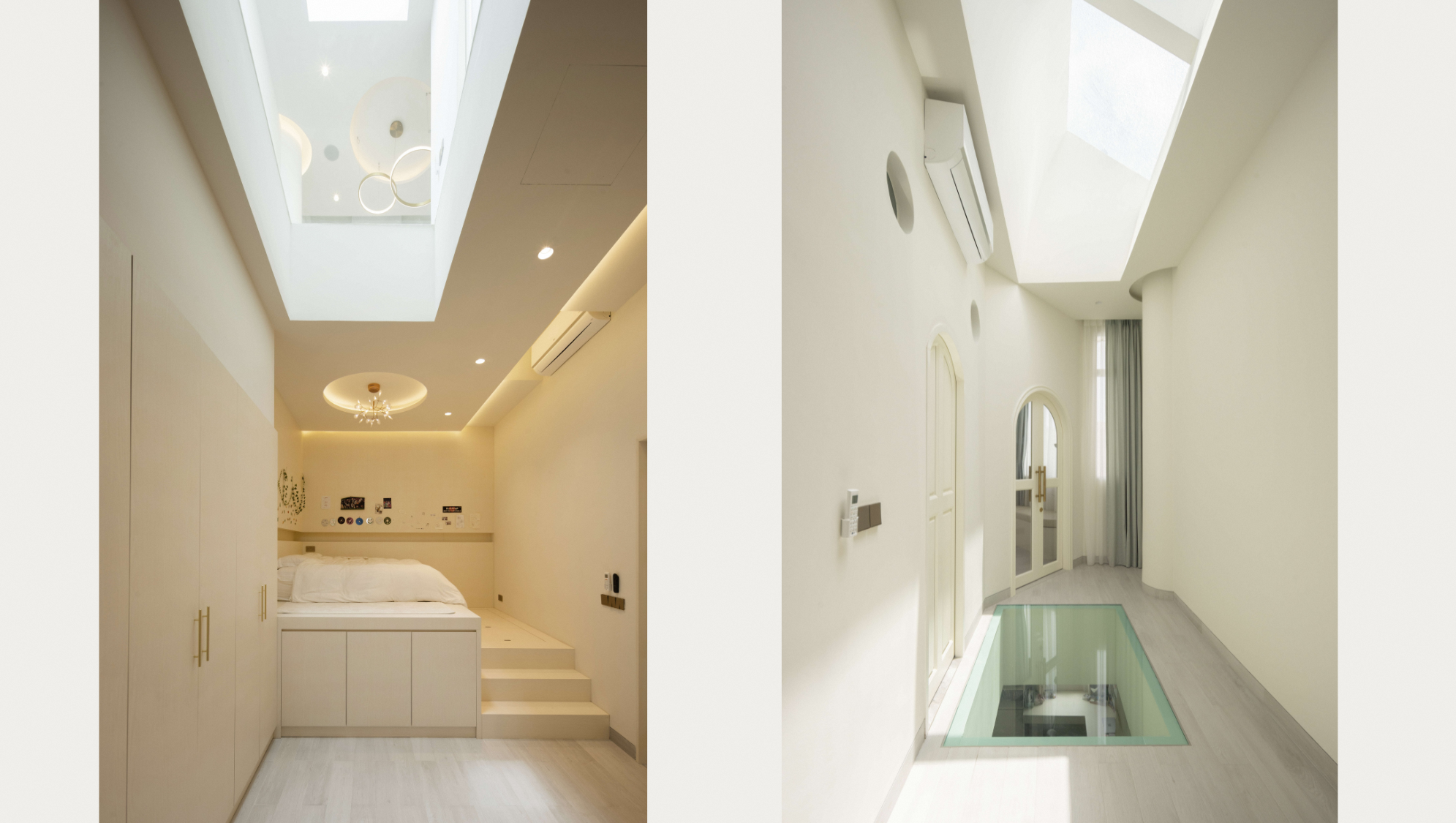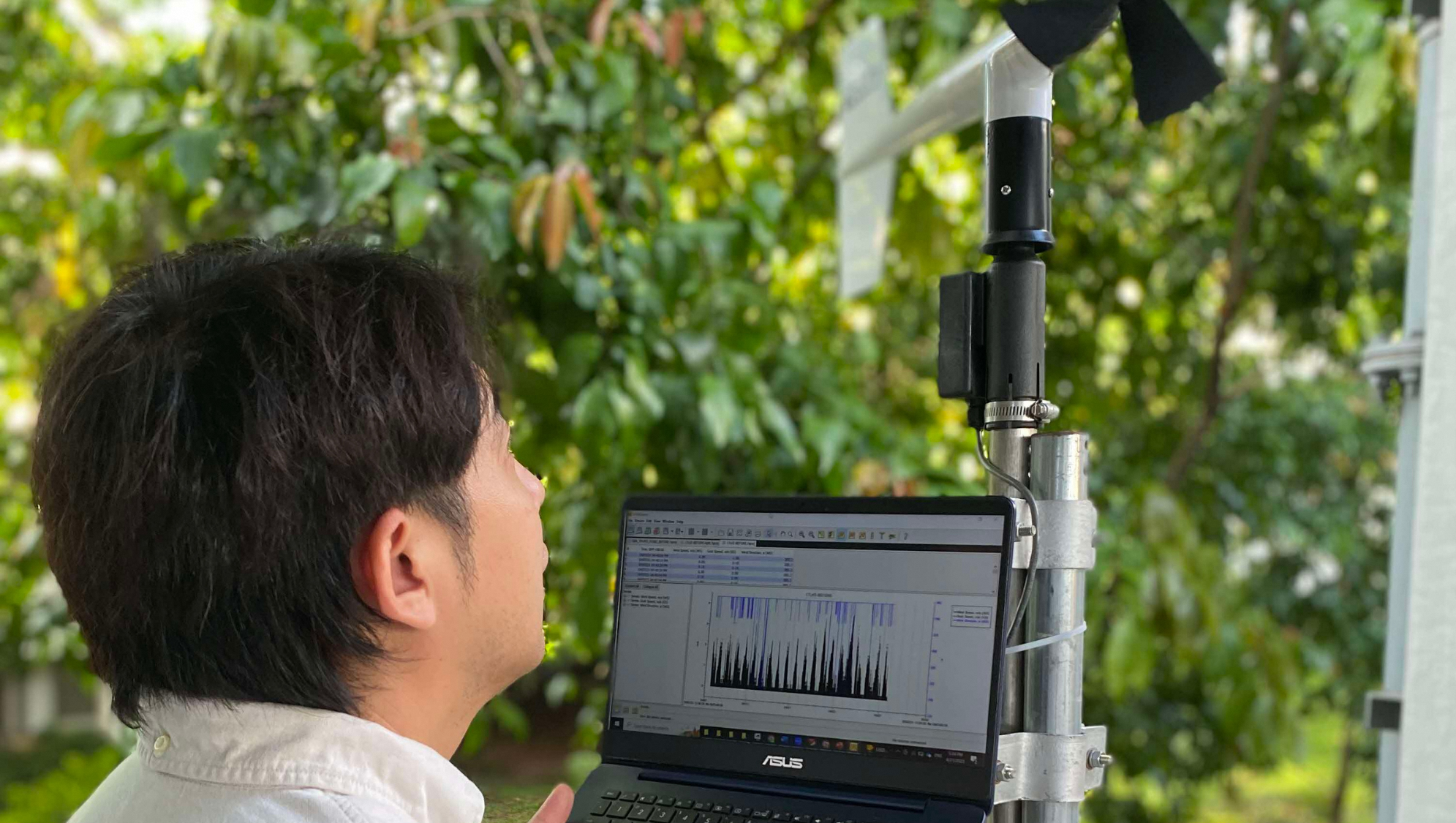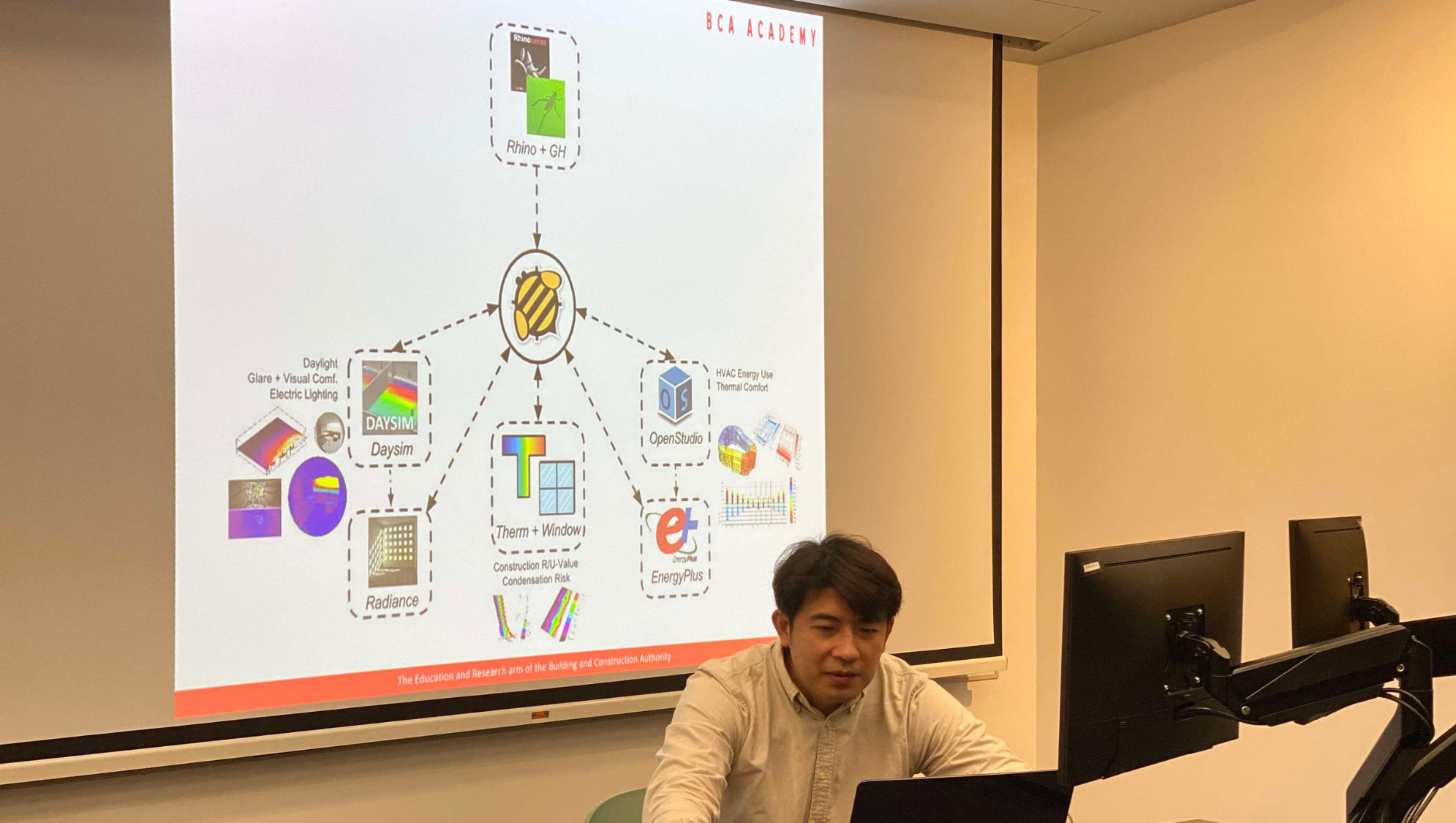A turret-like structure forms the property’s exterior, reminiscent of medieval castles from Disney movies. On its sides, domed windows sparkle under the sunlight.
This is not a historical monument or a tourist attraction, but a semi-detached home in Kembangan cleverly designed using technology and innovative methods to optimise daylight and ventilation.
“When sunlight pierces through the skylight, it enters the second floor which allows for very pleasant natural lighting in the bedroom,” said Ar. Aloysius Lian, Principal Architect at Lian Architects, a firm he established in 2014. “The space is also designed in such a way that the windows are specifically placed for facilitating wind flow.”
 Natural light peeking through bedroom and walkway
Natural light peeking through bedroom and walkway
These design considerations, which emphasise sustainability while meeting the client’s preferences, are based on Lian Architects’ evidence-based design approach. The scientific method uses environmental data to influence the design and maximise energy efficiency. In Ar. Lian’s words, the approach relies more on science and data than “instinct and experience”.
This is one of the many examples of the built environment sector's increasing utilization of technology to forge a more sustainable footprint on Singapore's landscape. This momentum is complemented by professional organisations like the Singapore Institute of Architects (SIA), which actively supports its members like Ar. Lian in their pursuit of a sustainable built environment.
Using Sensors and a software called Rhino
Ar. Lian’s work experience in the United States, as well as his time as a researcher at the Singapore University of Technology and Design (SUTD), introduced him to evidence-based design.
While there are various approaches to architecture, Ar. Lian’s method uses sensors placed at the site for a month or two before construction. They detect a range of environmental conditions such as wind direction, temperature, relative humidity, lighting levels and wind speeds, which are recorded in a data logger. This data is then fed into a software called Rhino to optimise space design, like where windows and skylights should be located.
 Wind sensor checks in progress
Wind sensor checks in progress
In other projects, using sustainable features like shading facades may be common but these are not always placed at the most strategic locations. And while sensors are used, they may not be introduced at the design stage. For example, Punggol Digital District measures environmental data in real-time for facilities management purposes.
“Rhino and its various software extensions allow us to connect the data in a step-by-step visual algorithm,” said Ar. Lian. “A visual algorithm is like a recipe. Depending on the different ingredients put in, which is data like environmental measurements, different outputs will be derived, which are used to inform our design. It is like baking a cake.”
Apart from creating more sustainable designs, the use of cutting-edge software also helps to achieve quicker fabrication. One example of this is a linkway bridge at 71 Robinson Road, which required repeated motifs.
“We had to design the bridge using modular and easily transportable panels for ease of application,” said Ar Lian, who noted that the external panels of Jewel Changi Airport were manufactured in the same way.
For consumers and clients, evidence-based design can bring immediate benefits, with most of the environmental indicators improving by between 20 and 30 per cent after application, resulting in cooler, brighter interiors.
“This means they can save on electricity bills by relying less on air-conditioning and artificial lighting,” said Ar Lian, who won the President’s Design Award with the SUTD Advanced Architecture Laboratory in 2018.
Better Designs With Data
However, some clients are sceptical of the hardware that Ar Lian uses, afraid that the loggers and sensors would compromise their privacy. Instead, he reassures them by showing them how the devices work and their reputable origin.
Design professionals, too, could be hesitant about deploying the devices as data-influenced designs may not align with their working style. “Resistance in architects towards this approach is probably due to the notion that the data derived may contradict their own design intents,” Ar Lian explained.
Having faced this predicament himself, he says the best way forward is to develop designs that offer the best of both worlds.
“Every building is like my baby,” he said. “I want to build and design buildings that are not only nice to look at but also contribute to the world. I don’t want to build another ‘glass box’ which takes up a lot of energy and wastes a lot of resources.”
Ar Lian who also lectures at Singapore Polytechnic and BCA Academy, is doing his part to move the needle in the architecture community. Besides keeping himself updated on the latest architectural practice resources via SIA’s Telegram channel, he has also attended the organisation’s talks on the latest technology like blockchain and augmented reality.
Ar Lian also lectures at Singapore Polytechnic and BCA Academy, and the students he teaches are the industry’s future, while the adult learners are decision-makers.
 Ar Lian in one of his lectures at the BCA Academy
Ar Lian in one of his lectures at the BCA Academy
“The use of Rhino is getting more common, as more students that I exposed this software to enter the industry,” he said.
He believes his firm is the first to combine the use of sensors and software in design work. But many architects are incorporating other technologies and innovations to achieve good and sustainable designs.
“Firms are now finding ways to validate their designs, from using supercomputers to hiring experts in new departments,” he said. “We are going in the right direction.”
Indeed, the future of Singapore’s built environment industry looks bright, with firms like Lian Architects paving the way forward, by marrying technology and design, one well-placed window at a time.